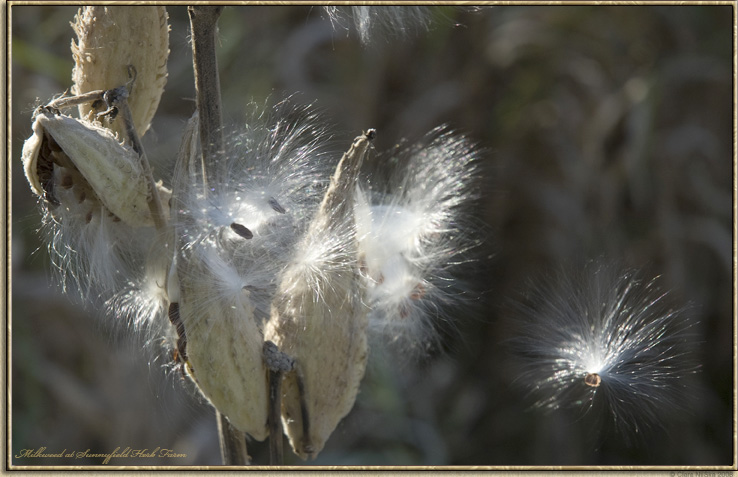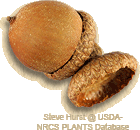|
|||||
|
In order for modern Western herbalism to move ahead we need to merge both our tradition and our science. The former has been lost, to some extent, and must be recovered. Many attempts have been made to bridge Chinese or Ayurvedic energetics with Western herbalism. I find that these approaches are forced or superficial because they are not capable of representing the Western historical, traditional, energetic, and folk medical milieu in which use of the plant developed. We need to recapture the ‘lost energetics’ of traditional Western herbalism to make this bridge. When this background is filled in it will then be possible to compare the use of herbal energetics, East and West, and also to compare traditional uses with modern pharmacology.
Energetics and Tastes in Traditional Herbalism All traditional systems of herbal medicine in the Old World relied heavily on a system of energetics (yin/yang, the five elements, the four elements, the four qualities, the three doshas, etc.) to describe pathological and curative phenomenon, and a system of tastes to analyze plant properties. Usually these are placed together, so that in Chinese medicine there are five elements with five corresponding tastes (wood/sour, bitter/fire, sweet/earth, pungent/metal, salty/water). In Ayurveda there are six tastes: sweet (earth, water), sour (earth, fire), salty (water, fire), pungent (fire, air), bitter (ether), astringent (earth, air). Samuel Thomson only recognized three tastes. Somewhere he says (I lost the beautiful little quotation): the three things necessary to the practice of medicine are the hot, the rough, and the bitter. (Rough equals astringence). This is a better description of Thomson’s personality than medicine! Not all energetic systems are in agreement. In Chinese medicine sour is relaxing (wood), in Ayurveda it is warming, while in Greek medicine it is cooling. In Chinese medicine bitter is warming, while in Ayurveda, Greek, and modern European phytotherapy it is cooling. Pharmacologically, bitterness is complex since we have, on the one hand, the bitter cyanogens that interfere with the Kreb’s cycle and are therefore cooling, the bitter iridoids that are ‘alterative,’ and the bitter anthroquinones that are purgative. The effects of tastes are fairly complex; reducing them to elemental rulerships and a specific number (four, five, six) is artificial. This was one of the important lessons I picked up from David Winston, who uses the tastes more pragmatically. Tastes do reflect pharmacological properties. The cooling flavonoids are usually associated with sour acids in fruits, sweet remedies are usually building because high in carbs, the pungent remedies are almost all warming. All pungent remedies may be considered stimulating. In Greek medicine pungence is termed ‘sharp.’ The Greeks thoughts that fire particles were sharp-edged, while particles of air, water, or earth were not. Many traditions do not differentiate between spicy, pungent, and acrid. Acridity, though burning and irritating, is very different from pungence or spicyness, which is warming, burning, and stimulating. Acridity may be defined as the taste of bile in the back of the throat (think of lobelia or raw jack in the pulpit). Acridity was probably associated with anti-malarial and anti-bilious remedies in the nineteenth century and these balance the sympathetic/parasympathetic (digestion, chills, fever), so they are in fact relaxants and antispasmodics (lobelia, catnip, valerian, hops, crampbark). It is not really possible or desirable to line up all the tastes with metaphysical energetics. It is better to line up tastes with physical properties.
Pharmacology Modern pharmacology recognizes two major subdivisions of material manufactured within plants called ‘primary’ and ‘secondary metabolites.’ The former are those that are made in order to sustain life and reproduction. They include the basic carbohydrates, lipids, proteins, and minerals necessary for basic cellular function and reproduction. The latter are substances that do not serve these primal uses. Sometimes their functions are unknown, but in general they serve to make the plant hard or flexible, so it can grow upright or twine about, or they protect the surface, retain water, transpire water, discourage pests, attract pollinators or fruit-eaters to disperse seed, etc. The basic thing that can be said about the secondary metabolites is that they seem to exist to help the plant deal with stress. The origin of disease is stress. What could be more natural than that plants with prominent secondary metabolites would be medicines for humans and animals dealing with stress and disease? What the plant can do for itself, it can do for others. Yet, most secondary metabolites are ignored by modern medicine as too mild for use, even though they are identical or analogous to substances used for the same purposes in animals. Let us think for a moment about the differences between food plants and medicines. The former are valued because they build up large supplies of food – usually carbohydrates or lipids. They like ideal crop conditions – farming. Herbs or medicine plants, on the other hand, often grow in stressed places – too dry, too moist, too hot, too cold, too hot and cold, too shady, etc. Secondary metabolites range from the highly edible, like flavonoids in fruit, to the inedible (tannins in bark), to the highly toxic and hallucinogenic (certain alkaloids). The latter class act strongly on the nervous system. Here Rudolf Steiner (1963) makes an interesting observation. He says that the alkaloids basically represent an animal – that is to say, a neurological – component that has entered into the vegetable realm. Steiner’s actual term for this ‘animal’ property is ‘astral,’ but when we look at what he is describing – that which makes animals different from plants – we realize that he is describing the neurological component. And indeed, this is what so many (not all) the alkaloids act on. Unfortunately modern biomedicine has chosen to use these alkaloidal agents, with powerful actions, rather than the simple ones – flavonoids, tannins, bitters, etc. – that effect gentler, less easily observed change. The latter are found in herbs, and are the special province of herbalists. Of course herbalists sometimes use alkaloidal plants and medical doctors sometimes use herbs, but the line of demarcation is pretty easy to observe.
Energetics, Tastes, and Pharmacology Now we come to the interface between ancient and modern, holistic and reductionist. From this point on I acknowledge my relative dependence on David Winston’s teachings, linking the energetics, tastes, and pharmacology. I have developed some concepts in a different direction, due to my own experiences. Tastes are a bridge or intermediary between energetics and pharmacology because they relate to hot, cold, damp, dry, wind, etc., on the one hand, and secondary metabolites on the other. For instance, mucopolysaccarides or mucilages are moist, soothing, and cooling. Flavonoids are often known as ‘anti-oxidants,’ the fancy scientific word for opposing burning or weathering. Thus, flavonoids are cooling, and indeed, flavonoids usually occur in fruits, which we eat in summer to cool off. Most aromatics are stimulating (essential oils in rosemary, thyme, sage, etc. are all warming and stimulating), but a few are cooling. The volatile oil limonene, found in lemons and melissa, is cooling. Some flavors do not easily fall into simple energetic or pharmacological categories. Despite exceptions, there are general relationships between energetics, tastes, and pharmacology, as the following table shows.
Energetic Condition: Medicinal Antidote:
Greek Physiomedical Taste Action Pharmacology
Heat Irritation Sour, Fruity Refrigerant Flavonoids Cooling Cyanogens
Cold Depression Aromatic Stimulant Volatile Oils Pungent Antiseptic Terpenes Tingling Diffusive
Dry Atrophy Moist Mucilage Polysaccharides Salty Emollient Bitter Alterative Sweet Nutritive Carbohydrates Nutty Fixed oils Meaty Proteins
Damp Torpor Bitter Alterative Diverse bitter compounds Stagnation Laxative
Status Relaxation Puckering Astringent Tannins fluxus
Status Tension Acrid strictus
In herbalism we do not use the ‘active ingredient’ but the combination presented by nature. We use a ‘slurry’ of constituents which, altogether, nudge the organism in a certain direction. The power of the herb is not based on the sheer force of the radical active ingredient, as in biomedicine, but on the cumulative power of a bunch of little ‘nudges’ all operating in a certain direction, i.e., on a physiological mechanism in the organism which is itself the product of a ‘slurry’ of biochemical processes and changes. Biomedicists often consider the contents of herbs, as found in nature, to be either laughably miniscule and irrelevant, or somehow unknown and potentially toxic. Herbs, however, do have great internal logic. This logic was mapped out by the ancients, using energetics and tastes, and by the moderns, using pharmacology, and the two correlate with each other nicely. 
Pelikan, Wilhelm. Healing Plants, Insights hrough Spiritual Science. v. 1. German edition, 1988. Translated by A. R. Meuss. Spring Valley, NY: Mercury Press, 1997. A. W. Priest and L. R. Priest. Herbal Medication: A Clinical and Dispensatory Handbook. London: L. M. Fowler and Co., Limited, 1984. [Reprinted, 2001]. Fred Rosner. The Medical Aphorisms of Moses Maimonides. Maimonides’ Medicine Writings. v. 3. Haifa: The Maimonides Research Institute, 1989. Rudolf Steiner. Spiritual Science and Medicine. New York: Anthroposophical Press, 1963. David Winston. “The 10 Tastes Pamphlet,” The Energetics of Herbs. Broadway, NJ: 1999. Matthew Wood. The Practice of Traditional Western Herbalism. Berkeley: North Atlantic Books, 2004. © 2009 Matthew Wood
|
|||||


